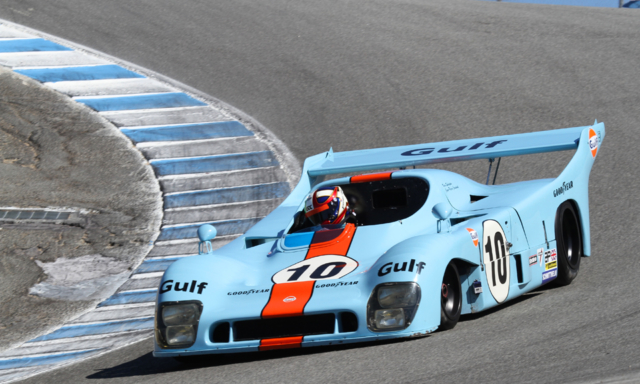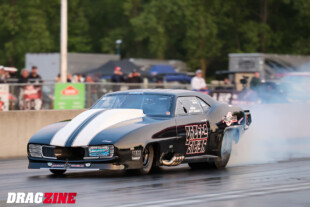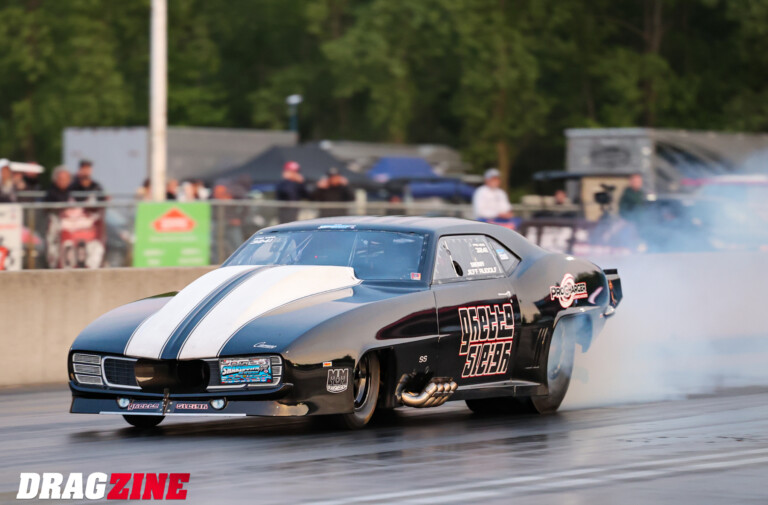Classic racers don’t come any purer than this one. With a throaty, incredible bark, an incredibly slick shifting action and massive thrust in every gear, this classic Le Mans racer looks more like a projectile weapon than a car. The minimalist, obviously unsafe interior only adds to the sense of danger. Though cars have moved on considerably since forty years ago, there’s something romantic and terrifying — the two go hand-in-hand — about the racers of seventies. Better than today? Let’s examine the video to find out.
The Gulf Mirage GR8 was an evolution of the ’74 GR7, which incorporated an aluminum and steel-reinforced chassis and dual wishbones up front with parallel links at the rear. The GR8 began its list of improvements with an extended wheelbase. With the newer Mulsanne Straight in mind, the wheelbase was extended by six inches to add stability at speed. For the same reason, the bodyshape had to be smoothened to reduce drag — keep in mind, these were the days when downforce was just beginning to be understood.
There was more to this package than the bodyshape and the wheelbase. The 3.0-liter Cosworth DFV V8 revved to 8,400 rpm — 2,000 less than the previous year’s car, done to conserve fuel. This motor was a detuned F1 motor, and even with the reduced redline netted 400 horsepower. However, the immense vibration from the single-plane crankshaft would vibrate so forcefully, so that the car would slowly fall apart.
These vibrations actually broke the exhaust at the 1975 24 Hours of Le Mans, but the team managed to repair the exhaust early on in the race and take the win — with the sister car running in third. Watching this onboard, it’s not hard to understand how it was successful back in the day. In the hands of the talented Marino Franchitti, the car shows excellent traction and balance everywhere on the challenging Laguna Seca. Though the past is often seen through rose-tinted glasses, this is not nostalgia. There was something romantic about the sounds and sights of the seventies.























